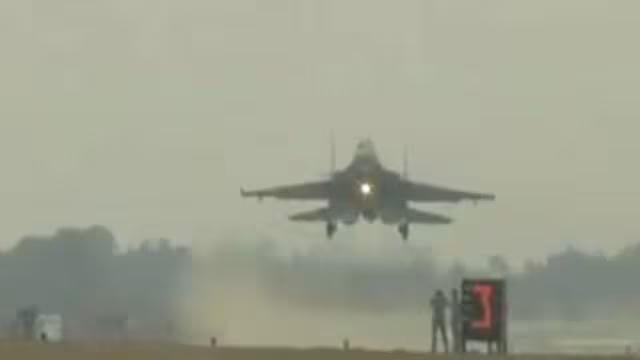
Why is IAF Conducting Fighter Jets’ Landing & Take-off Drill at Ganga Expressway in UP?
In a recent exercise, the Indian Air Force (IAF) conducted take-off and landing drills on the Ganga Expressway in Uttar Pradesh, utilizing fighter jets like Rafale. This drill, carried out during both day and night, aimed to assess the expressway’s potential as an alternative runway during times of war or national emergencies. The Ganga Expressway has become the first airstrip on any expressway in India capable of handling both day and night landings of jets.
The IAF’s decision to conduct this exercise on the Ganga Expressway highlights the increasing importance of infrastructure development in the country. As the Indian military continues to modernize and expand its capabilities, the need for versatile and adaptable infrastructure has become more pressing. The Ganga Expressway, with its newly developed airstrip, is poised to play a crucial role in this endeavor.
The exercise, which was carried out in the presence of senior IAF officials, included a series of take-off and landing maneuvers by the Rafale fighter jets. This demonstrated the airstrip’s ability to handle high-performance aircraft, which is a critical factor in determining its effectiveness as an emergency landing site.
The Ganga Expressway, spanning over 165 kilometers, is one of the most ambitious infrastructure projects in India. Built at a cost of over Rs 32,000 crore, the expressway aims to reduce travel time between cities in the region. With its newly developed airstrip, the expressway has now become a hub for military exercises and operations.
The decision to develop the airstrip on the Ganga Expressway was taken in light of the increasing need for alternative landing sites. With the Indian military’s growing presence in the region, the need for secure and reliable landing sites has become more pressing. The Ganga Expressway’s airstrip, with its ability to handle both day and night landings, provides a vital backup option for the military.
Moreover, the exercise highlights the IAF’s commitment to staying ahead of the curve when it comes to infrastructure development. The Air Force has been at the forefront of developing new infrastructure, including airbases and airstrips, to support its operations. The Ganga Expressway’s airstrip is just the latest example of this commitment.
The exercise also underlines the importance of cooperation between the military and civilian authorities. The development of the airstrip on the Ganga Expressway was a collaborative effort between the IAF, the Uttar Pradesh government, and other stakeholders. This kind of cooperation is essential for ensuring the success of such projects and for developing the necessary infrastructure to support the military.
The IAF’s exercise on the Ganga Expressway has sent a clear message to the country: the Indian military is committed to staying ahead of the curve when it comes to infrastructure development and is willing to push the boundaries to achieve its goals. The Ganga Expressway’s airstrip is a testament to this commitment and highlights the importance of investing in infrastructure development for the country’s security and growth.
In conclusion, the IAF’s exercise on the Ganga Expressway is a significant development for the country’s military infrastructure. The airstrip’s ability to handle both day and night landings of jets makes it a vital backup option for the military. The exercise also underscores the importance of cooperation between the military and civilian authorities and the IAF’s commitment to staying ahead of the curve when it comes to infrastructure development.






